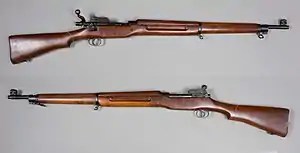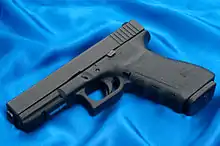Sirius Dog Sled Patrol
The Sirius Dog Sled Patrol (Danish: Slædepatruljen Sirius), known informally as Siriuspatruljen (the Sirius Patrol) and formerly known as North-East Greenland Sledge Patrol and Resolute Dog Sled Patrol,[1] is an elite Danish naval unit. It conducts long-range reconnaissance patrolling, and enforces Danish sovereignty in the Arctic wilderness of northern and eastern Greenland, an area that includes the Northeast Greenland National Park, which is the largest national park in the world.[2] Patrolling is usually done in pairs and using dog sleds with about a dozen dogs, sometimes for four months and often without additional human contact.
| Sirius Dog Sled Patrol | |
|---|---|
| Slædepatruljen Sirius | |
 Badge of the Sirius Dog Sled Patrol | |
| Founded | 1941 |
| Country | |
| Allegiance | |
| Branch | Joint Arctic Command |
| Role | Reconnaissance Enforcing national sovereignty Information operations |
| Size | 14[1] |
| Garrison/HQ | Daneborg (74° 18'N 20° 14'W) |
| Nickname(s) | Siriuspatruljen |
| Mascot(s) | A Sled dog |
| Engagements | World War II |
| Commanders | |
| Chief of Defence | General Bjørn Bisserup |
| Chief of Joint Arctic Command | Maj. Gen. Kim Jesper Jørgensen |
The Sirius Dog Sled Patrol has the ability to engage militarily, and has done so historically. Its purpose is to maintain Danish sovereignty and police its area of responsibility.[3] The physical and psychological demands for acceptance into the unit are exceptional. Crown Prince Frederik patrolled with the Sirius Dog Sled Patrol.[4]
History
In 1933 the international court of the League of Nations ruled in the Danish-Norwegian dispute over Erik the Red's Land that for it to remain Danish, Denmark had to assert its sovereignty there.[5] Initially, this presence was in the form of two fixed police stations.[6]
The Sirius Dog Sled Patrol, first known as the North-East Greenland Sledge Patrol, was activated in the summer of 1941 during World War II to conduct long-range reconnaissance patrols along the northeast coast of Greenland thereby preventing German presence there. Its headquarters was at Eskimonaes, which had been until then a scientific station.[7] At the time, the Germans established a number of secret weather stations on the eastern coast of the island to provide them with invaluable meteorological information both to assist their U-boat campaign and to predict the weather in the European theatre. Thus the patrol's discovery of these stations denied Germany such information with significant implications both for the Battle of the Atlantic and for air and land fighting in Europe, despite the enormous distance of Greenland from the main theatres of war.
The Sirius Dog Sled Patrol cooperated with Nanok East Greenland Fishing Company, the only other organization active in the remote area, which built a number of hunting huts in the uninhabited expanses of north eastern Greenland.[7]
The Sirius Dog Sled Patrol discovered the German weather station Holzauge at Hansa Bay on the northeast coast of Sabine Island, which was subsequently destroyed by United States Army Air Forces (USAAF) bombers from Iceland. During the war, the unit suffered one man killed in action. Two others were captured by German forces, but escaped and rejoined the patrol.[8]
In 2008, the National Bank of Denmark issued a 10-DKK commemorative coin of Sirius.[9]
Organization
.jpg.webp)
Since October 2012, the Joint Arctic Command has been responsible for the Sirius Dog Sled Patrol.[10]
The Sirius Dog Sled Patrol used to be operationally under the Greenland Command, and administratively under the Royal Danish Navy and also represents Denmark's military presence in northeast Greenland.
The Sirius Dog Sled Patrol operates in the northern, and northeastern part of Greenland from the west coast of Hall Land (Petermann Fjord and Glacier) 81°04′N 61°40′W to Cape Biot north of Fleming Fjord 71°53′N 22°33′W. The flying distance between the two points is about 2,100 km, but the length along the coastline is far greater, around 16,000 km. The Greenland ice sheet is not a part of the patrolled area.
The Sirius Dog Sled Patrol is stationed at Daneborg (74°11′N 20°08′W), and maintains personnel at Station Nord, Danmarkshavn, and Mestersvig.
The Sirius Dog Sled Patrol uses more than 50 depot huts scattered across the patrolled area. The depot huts are resupplied by small boats in the southern area, and by aircraft in the northern part.
The Sirius Dog Sled Patrol consists of six dog sled teams for the duration of the year, each consisting of two men, and 11 to 15 dogs. When traveling, each team carries approximately 350–500 kg, depending on the distance to the next depot.
Currently, the Sirius Dog Sled Patrol consists of 12 patrolmen and two radio operators.[1]
Responsibilities

Sled patrolling is divided into two periods. Depending on when the ice becomes thick enough, the autumn patrol starts sometime in November, and lasts until late-December. The sun sets for the last time around the beginning of November, and in the increasing darkness the winter storms get progressively worse, and more frequent. Getting home before Christmas is therefore not always possible for members of the unit. Around the end of January, when the weather stabilizes, and the sun reappears, the longer journeys begin and last until June, when the ice begins to break apart and drift southwards. During this period, the six sled teams will cover a large part of the coastline, and within a period of three to four years all areas will be visited.
Recruitment and training
Candidates for the Sirius Dog Sled Patrol must have completed their compulsory service in the Danish Defense. At the tryouts, seven men are selected to start on about six months of various training courses. Women can apply, but none have yet.[11]
- Survival course in Greenland (five weeks)
- Shooting course
- Demolition course
- Engine and mechanics course
- Reconnaissance course
- Firefighter course
- Radio and communications course
- First aid course
- Extended first aid course
- Sewing course
- Truck course
The courses run from December to the end of May. The final group consisting of twelve men is picked as late as two to three weeks before they depart to Greenland for 26 consecutive months.
Equipment


Because of the special nature of the Sirius Dog Sled Patrol operations, a wide range of unique equipment is required that is not normally used by the Danish armed forces.[3][12]
The weapons carried also reflect the harsh conditions. Among the equipment used by the Sirius Dog Sled Patrol is the M1917 Enfield bolt-action rifle chambered in .30-06 Springfield, known in Danish service as the Gevær M/53 (17), and the Glock 20 pistol chambered in 10mm Auto.
The Sirius Dog Sled Patrol uses the standard .30-06 Springfield 168-grain (10.89 g) armor piercing, M2 military rifle round and also civilian hollow-points. The patrolmen feel that the M2 military round is best against aggressive polar bears at long range, but that the hollow-points are better against an enraged musk ox. Typically, the patrolmen arrange their stripper clips so every third round is a hollow-point.
The Sirius Dog Sled Patrol formerly used Pistol M/49 sidearms chambered in 9×19mm Parabellum, but they proved insufficient against the polar bears encountered.[13]
"The weapons carried also reflect the harsh conditions. Only bolt-action rifles (M17/M53) perform reliably. The standard SIG210 Neuhausen sidearm was recently replaced by the 10mm Glock 20, as the stopping power of multiple 9mm rounds proved to be insufficient against a polar bear."[14]
See also
References
- "Slædepatruljen Sirius". Forsvaret.dk (in Danish). Danish Defence. 27 November 2015. Retrieved 28 February 2017.
- Nationalpark i Grønland - verdens største naturreservat
- Formål og opgaver Archived December 2, 2008, at the Wayback Machine Forsvaret, Grønlands Kommando
- Slædepatruljen Sirius Archived 2011-08-27 at the Wayback Machine Den Digitale Slæderejse - Indsigt
- Christensen, Peter Bondo (2007). Sirius – et øje i nord [Sirius - an eye in the North] (in Danish) (1. printing, 1st ed.). Gyldendal. pp. 19–22.
- "Historie - Hvid Verden" [history - White World]. hvid-verden.dk (in Danish). Archived from the original on 2015-02-15. Retrieved 2015-12-11.
- "Catalogue of place names in northern East Greenland". Geological Survey of Denmark. Retrieved 8 July 2016.
- Northeast Greenland Sledge Patrol - Sledge Members
- "Sirius". National Bank of Denmark. 16 September 2011. Archived from the original on 16 October 2013. Retrieved 16 October 2013.
- GERARD O’DWYER. "Denmark Boosts Resources for Arctic Security" DefenseNews, 8 October 2013. Accessed: 20 October 2013.
- Finkel, Michael; Hoffmann, Fritz (2012). "The Cold Patrol". National Geographic. National Geographic Society. 221 (1): 82–95. Retrieved 28 February 2012.
- DeMille, Dianne; Priestley, Stephen (December 2005). "Permanent Presence: Recruiting, Training, & Equipping Rangers in the Arctic". Canadian American Strategic Review. Archived from the original on 2010-07-08. Retrieved 2011-05-09.
-
"Denmark's Arctic Assets and Canada's Response – Sovereignty and Strategic Resources of the High Arctic". Canadian American Strategic Review. May 2005. Archived from the original on 2008-09-20.
The advantage of an 'old fashion' bolt-action rifle in the high arctic is obvious—no matter how cold or icy it gets, that bolt can be worked by the shooter. Under severe arctic winter conditions, the bolts of automatic rifles may jam. The use of 'full-sized' cartridges was dictated by two factors: range and effectiveness against polar bears. Most Danish units use 9mm automatics like the CF but the Sirius Patrol learned through hard experience that 9mms had insufficient 'stopping power' to deal with angry adult polar bears. As a result, Sirius Patrol members carry more powerful 10mm pistols for self-defence, employing the 10mm Glock 20 automatic.
- "Denmark: Special Operations and Counterterrorist Forces". Special Operations (SOC). 2000. Archived from the original on 2011-01-13. Retrieved 2012-11-18.
External links
| Wikimedia Commons has media related to Sirius Sledge Patrol. |
- Slædepatruljen SIRIUS (in Danish) - Official homepage for Sirius Patrol
- The Sirius Patrol - Destination East Greenland Palle Norrit, former manager of the Patrol service, North and Northeast Greenland
- Kursus for personnel til slædepatruljen SIRIUS (Army Combat Training School, Course for slædepatruljen SIRIUS personnel) (in Danish)